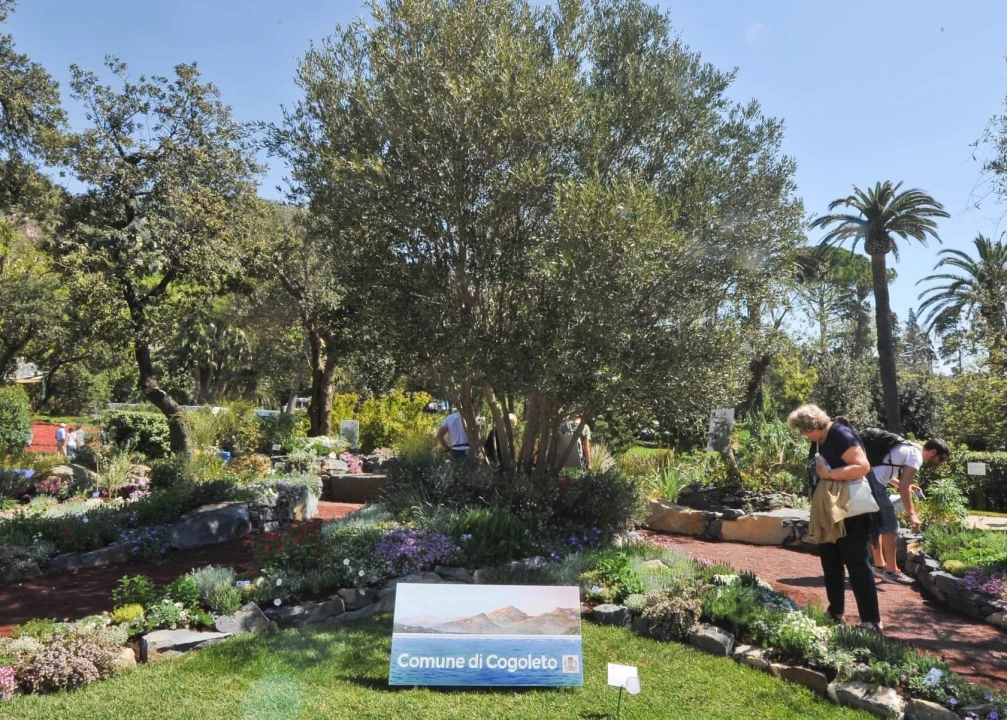The Botanical Garden of Villa Beuca, on the western slope of Beuca hill, was built in 2002 by the Municipality of Cogoleto. Its aim is to safeguard the typical plant environments of Liguria. It extends over 8.4 acres divided into three main areas – an instructional one, an area for the spontaneous plant, and a typical Ligurian environment – in a relatively small place, visitors can enjoy an exhaustive display of Ligurian flora.
The Garden also includes a Herbarium, which can be visited on request. It was created in 2003, and currently includes over 80 taxa ordered according to traditional criteria of conservation and classification.
The botanical garden is also extremely rich in fauna and perfectly suitable place for bird watching activities.
Its management was entrusted by the Municipality to the Social Cooperative “Il Giunco Onlus”, later merged with Social Cooperative “Il Rastrello” (which also employs disabled and handicapped people).
Flora
The Ligurian environment section simulates many types of environments at different altitudes. In particular, it includes
a marine reef, a Mediterranean scrub, a garrigue ecoregion, spontaneous orchids, a humid environment, the Ligurian pine forests, a thermophilic chestnut wood, a mountain forest, cliffs and rocks, serpentinite flora, and the anthropic area with olive trees.
The spontaneous plant section extends over a 2.7-acre area, where the vegetation can grow autonomously without any human support but little maintenance (like removing sick dead pines, improving walkways, and tagging the most interesting species). There are two very important types of plants here, such as the black bog-rush (Schoenus nigricans), and the Aphyllanthes (Aphyllanthes monspeliensis) which can be actually found only on the stony and well-drained soils of the western Riviera (“Riviera di Ponente”) all the way up to Cogoleto, and in few other places in the Apennines and Brescia area.
The instructional section is little than 1-acre long and is dedicated to the detailed study of plant species well accustomed to Mediterranean habitats, but of foreign origins, such as Californian and Australian varieties. Then, it covers ornamental species extremely popular on the Ligurian Riviera, palm trees, so-called primitive plant species (“living fossils”), and many more. There is also a library containing the herbarium and a collection of precious books – it is used for exhibitions, public conferences, courses, book presentations, and educational workshops.
Fauna
Thanks to the presence of so many different ecosystems and related plants, the Botanical Garden is populated by variegated wildlife. Insect species include dragonflies (visible in summer in the humid environment) with a dozen varieties like Calopteryx virgo, Coenagrion tenellum, Lestes viridis, Orthetrum cancellatum, Anax parthenope, A. imperator, Sympetrum fonscolombei, Crocothemis erythraea. In the same humid area visitors can find also edible frogs (Pelophylax kl. esculentus), common European frogs, and Turkish geckos.
Two-tailed pasha butterflies (Charaxes jasius) can also be seen, despite being hardly ever seen along the Ligurian Riviera, thanks to some strawberry trees (Arbutus unedo), on which they carry out the larval cycle.
Wild birds is also quite variegated: there are Dartford warblers (reproducing in the heather shrub), Moltoni’s warblers, blue rock thrushes (in the cliff below), European nightjars, and occasional melodious warblers (in the adjacent thermophilic wood), red-backed shrikes, and the remarkable tawny pipits (seen in 2003).
In nearby lower valley of the Arrestra Torrent, there are kestrels, sparrowhawks, Eurasian scops owls, European turtle doves and rock buntings. There are also true finches like The European goldfinch cirl buntings, European serins, the European greenfinch, and Chaffinches.
In autumn, winter and during spring migrations, many other birds can also be seen, such as Eurasian skylarks, song thrushes, tree pipits, whinchats, northern wheatears, common whitethroats, garden warblers, green and big common chiffchaffs, European pied flycatchers, passing-by Eurasian hoopoes, European bee-eaters and many others.
There are also many other species passing by, which does not stop here during their migration, such as swallows,
numerous passages of swallows, Common house martins, common swifts, and migratory birds of prey, including honey buzzards, Short-toed snake eagles (which also nest there), and marsh harriers.
Cogoleto Botanical Garden is, therefore, an ideal place for bird watchers.




